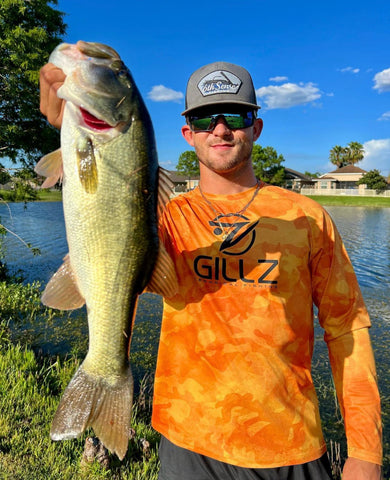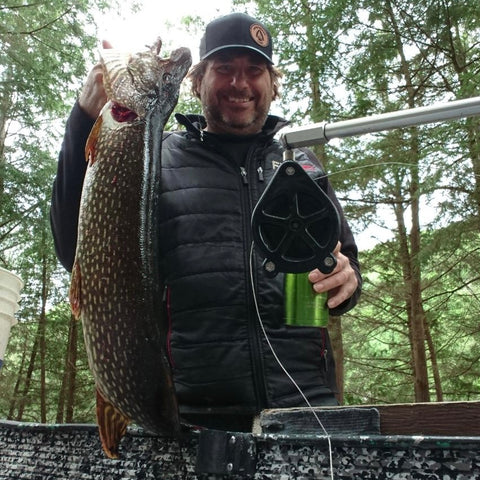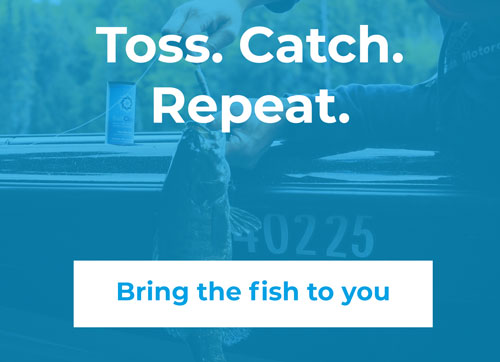Anglers are a conscientious bunch. We change our fishing line religiously, sharpen hooks frequently and make sure that our tackle boxes are crammed full of all the latest gear and gadgets. But how many turn their noses up at the fish attractants that line the tackle store shelves, believing that they are nothing more than a money-grabbing fish gimmick?
Skepticism reigns supreme in the land we call fishing, although the addition of scent to your arsenal can bring about bigger and better fish, and for those tempted enough to try it, the proof is definitely in the pudding. Read on to find out how using BaitCloud can bring about sure-fire success.
The Rules of Attraction
There are many different kinds of fish attractants on the market. From spray bottles to squeeze tubes and jars to jellies and of course, BaitCloud, the Multi-Sensory Fish Attractant, the tackle store shelves are literally soaking with a wide-range of product. It can be mind-boggling to say the least, but before you buy, you need to uncover the reason for using the stuff in the first place.
Losing The Negativity
Although most people believe that the sole use of scent is to attract fish to their lures, the most useful property scent exhibits is the ability to mask negative smells and tastes.
Never really thought of it that way, did you? Well, here's how it works.
Much like the strong, pungent smell of a skunk will find us pinching our noses, the same odor threshold can be said for all species of gamefish. (Mind you, fish may have a hard time detecting a skunk below the water, and they sure haven't adapted to covering their nose with their fins!)
When you think about it, we offer the fish many different reasons not to take a taste test of our lures. We unknowingly toss baits all day long that have come into contact with such fish-negative smells as sun lotion, bug spray, gasoline, cigarettes and worst of all, our own human scent. This can cause a fish to turn up their nose and refuse to bite. Even if you think your hands are clean, L-Serine (a tasteless, odorless chemical found in the skin oils of humans) will always be present on every worm, jig, or crankbait you come into contact with.
Using BaitCloud, for example, will mask or eliminate these undesirable smells, leaving your bait free from repellents and smelling attractive to any fish that happens upon it.
In this case, it's not so much an attractant as it is a cover-up for scents we unknowingly cast to the depths below.
Help With Holding On
Studies have shown that fish can spit out a lure in the blink of an eye. If the bait they are trying to ingest feels unnatural, or has a negative taste or odor, the chances of you driving the hooks home is a very low-percentage game. This is where fish attractant really shines.
The use of attractants will make your offering feel and taste alive, convincing a fish to hold on to the bait for a much longer time, ultimately allowing an angler to "feel" the fish first and then set the hook.
Much of the game of fishing has to do with feeling a fish strike (the subtle mouthing of a jig or the faint pick-up of a jerk worm), which in turn allows us to strike with a hookset. Without sensing the take of your bait, you'll never know that a fish was there.
Fish attractant can "trick" a fish into holding your bait for 5, 10 or even 30 seconds — this can be downright impossible when throwing a lure that hasn't been juiced up.
If you don't believe the validity of this scenario, try this little test the next time you hit the water. Tie two identical jigs on, one smothered with fish scent and the other coated with sunscreen. Find a shallow, clear area of the lake that is holding panfish and take turns casting each of the lures. You'll soon see for yourself how important the addition of a positive scent can be.
The Smelling Game
As you can see from the above examples, the use of fish attractant goes far beyond the notion of actually attracting fish to your bait through the use of smell. This however can very well happen, depending on the fish you are targeting.
For the most part, motion, shape, noise and water displacement are the primary stimuli that cause fish to strike a lure which is why BaitCloud developed a multi-sensory fish attractant. In layman's terms, a fish senses and is attracted to your lure long before smell or taste figures in the picture. Once they get close enough to your bait and commit to striking, taste and smell certainly have an important impact on the final decision.
Fish are a weird bunch. Some have a finely tuned sense of smell, while others seem to have a bad case of sinus congestion. The initial scent of a lure can attract a fish in from a distance, but that all depends on what you are targeting. On a scale of 1 to 10 (with 10 being the most sensitive sense of smell) here are some examples of common gamefish:
| 9-10 |
Catfish |
| 7-8 |
Carp |
| 6-7 |
Salmon and Trout |
| 5 |
Bass and Walleye |
| 1-2 |
Pike and Muskie |
As you can see, the addition of scent can attract a fish (such as a catfish or carp) to your bait long before they ever see it or sense it's movement. When dealing with pike or muskie, however, scent is only useful when they have already made visual contact and are just about to strike.
Although bass are in the middle of the pack when it comes to olfactory capabilities, keep this little tidbit in mind: the freshwater black bass can sense 1/200th of a drop of a substance in 100 gallons of water! Not bad for a creature that possesses a brain the size of a pea.
The Different Kinds of Fish Attractants
Fish attractant is available in many different varieties. From crayfish to shad and garlic to blood, the combinations are limitless.
When choosing a scent, my logic is to decide the species that you will be targeting, then figuring out their most-sought after prey. For example, when chasing after smallies, I will usually try BaitCloud Bass, a garlic-crayfish scent. Crayfish is a typical forage and although there certainly isn't any garlic growing in the water, for some reason, smallies go bonkers over it. If largemouth are the intended target, a switch over to a shad scent, BaitCloud Multi Species, can be highly effective. We use natural flavored scents, that are made with real ingredients. Real crayfish or shad parts will be just as convincing as the genuine thing.
My advice is to select a few different varieties and begin to experiment when out on the water. Try to figure out what specie prefers which, while also uncovering the baits they seems to work best with. Once this information is extrapolated, you will undoubtedly see your success rates rise.
Try or Not to Try — That is the Question
Fish attractants are coming into the forefront of the angling world. With the new advances scientists are making, duplicating attractive smells and tastes equals more fish for the angler that chooses to use them.
At BaitCloud, we use biomimicry to trick the fish into believing that their favorite meal is nearby. There is NO food or chum in these balls making them safe to use in lakes and water systems where chumming is illegal. They are made with all natural, biodegradable products and do not contain any plastics!
Take a look at BaitCloud next time you troll the tackle aisles — you'll be more than glad you did!
BaitCloud. Bring the fish to YOU!






